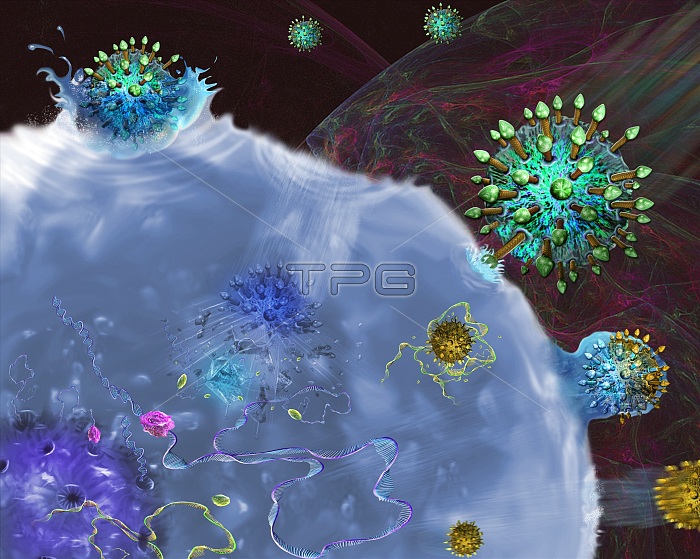
Retrovirus replication. Illustration of retroviruses (spiked) entering (upper frame) a cell (blue) and replicating. The virus attaches itself to its host cell's membrane and enters the cell via endocytosis. Once inside the cell the virus is uncoated (centre left) and its RNA (ribonucleic acid) genome (bottom centre) and the enzymes reverse transcriptase (RT, pink) and integrase (yellow ovals) are released into the cell. Reverse transcriptase transcribes the RNA to DNA (deoxyribonucleic acid, upper left of RT molecule), which moves to the host cell's nucleus (bottom left) where it integrates with the host's DNA with help from integrase. The virus hijacks the cell's nuclear machinery, causing it to produce viral RNA molecules (yellow and green, bottom left) and proteins. The proteins and RNA assemble into new viruses (one at centre right) and then leave the cell (right).
| px | px | dpi | = | cm | x | cm | = | MB |
Details
Creative#:
TOP25430798
Source:
達志影像
Authorization Type:
RM
Release Information:
須由TPG 完整授權
Model Release:
N/A
Property Release:
N/A
Right to Privacy:
No
Same folder images:

 Loading
Loading